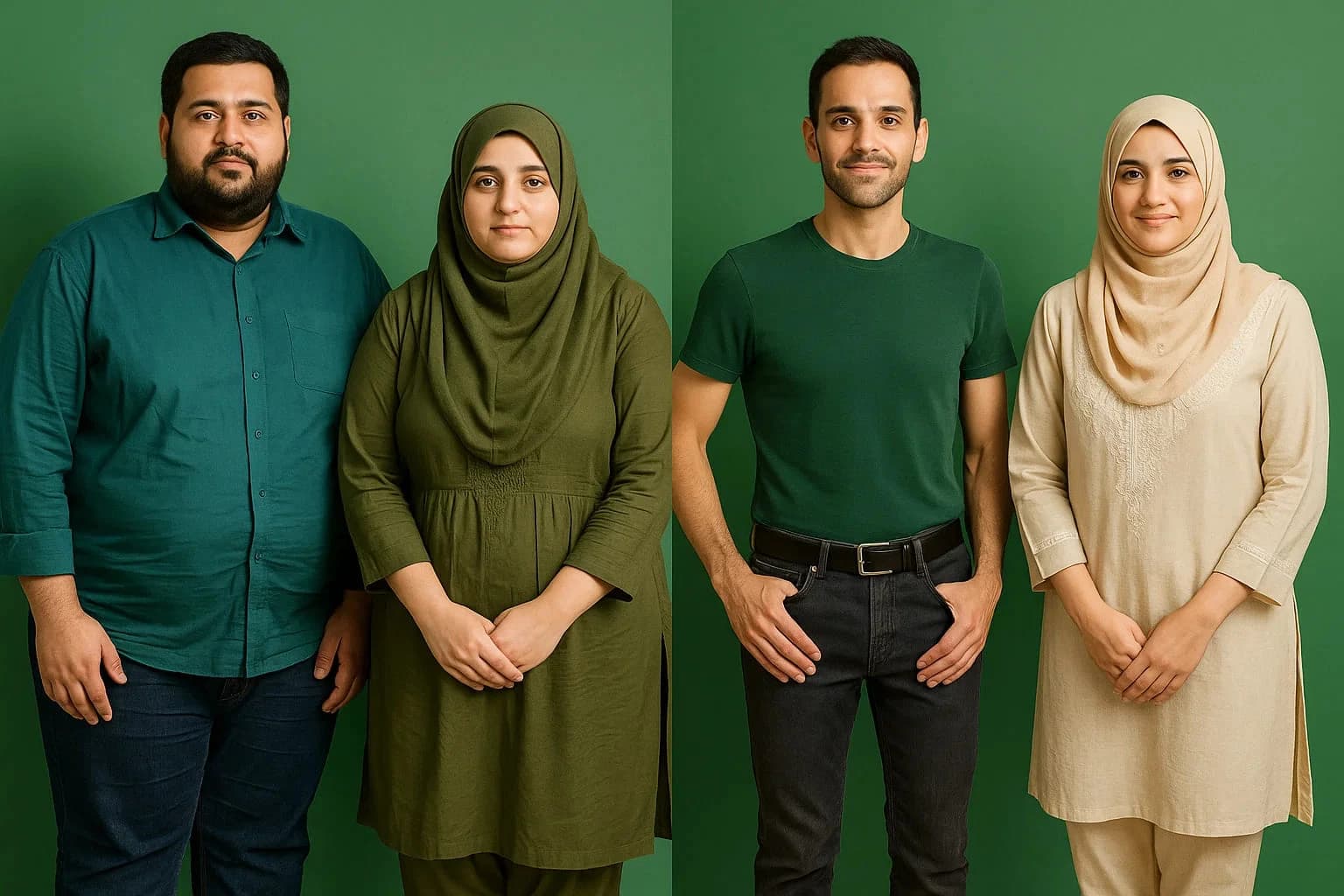© 2025 Roz UpdatesbyTETRA SEVEN

* All product/brand names, logos, and trademarks are property of their respective owners.
The COVID-19 pandemic was an unprecedented global crisis that tested the resilience of healthcare systems everywhere—and Pakistan was no exception. From overwhelmed hospitals and PPE shortages to the scramble for vaccines, the health sector faced immense pressure. Yet, amidst the chaos, something remarkable happened: necessity sparked innovation, and disruption led to reform. The pandemic didn’t just expose the weaknesses in Pakistan’s healthcare system—it also became a catalyst for long-overdue transformation.
Prior to 2020, Pakistan’s health infrastructure was marred by underfunding, limited digitalization, and vast disparities between urban and rural access. The coronavirus outbreak amplified these issues, but it also forced policymakers, healthcare providers, and tech innovators to act decisively. As a result, we have witnessed a wave of changes that have the potential to permanently reshape how healthcare is delivered, managed, and perceived across the country.
From the explosive growth of telemedicine to the digitization of patient records, from the expansion of the Sehat Sahulat Program to a renewed focus on mental health, the post-COVID era is defined by adaptation and resilience. These developments are not fleeting trends—they are structural shifts that continue to shape the future of healthcare in Pakistan.
In this blog, we explore seven lasting changes in Pakistan’s healthcare system that emerged from the COVID-19 crisis. Whether you're a healthcare professional, policy enthusiast, or concerned citizen, understanding these changes is vital to recognizing both the progress made and the challenges that still lie ahead.
Before the pandemic, telemedicine in Pakistan was largely underutilized, limited to niche services or urban-centric startups. COVID-19 dramatically altered that landscape. With lockdowns restricting mobility and hospitals overwhelmed, virtual consultations became a lifeline. Platforms like Sehat Kahani, which connects patients with female doctors via mobile apps, witnessed a surge in users and public trust. Their services expanded to include COVID-19 triage, mental health counseling, and even post-hospitalization monitoring. What started as a stopgap has now become a mainstream option for healthcare access, especially for women and residents in underserved areas.
The pandemic also accelerated the push toward digital recordkeeping. Previously, many healthcare institutions in Pakistan relied on paper files and manual documentation. But COVID-19’s need for rapid testing, tracking, and reporting pushed hospitals and clinics to adopt electronic health record (EHR) systems. This transition has improved patient management, reduced duplication of diagnostics, and streamlined data sharing between departments. Though still unevenly implemented, EHR adoption marks a significant step toward healthcare modernization and continuity of care.
While the shift to digital health is promising, it also highlights a major hurdle: digital literacy. Many healthcare workers, particularly in rural areas, lack training in operating health tech tools. Furthermore, the absence of a unified national database means that EHRs and telemedicine platforms often operate in silos, limiting their interoperability. Without a standardized digital health framework and consistent government oversight, the system risks fragmentation. Addressing these integration gaps is crucial to ensuring that digital health initiatives continue to scale sustainably.
The digital revolution in healthcare has been one of Pakistan’s most significant post-COVID shifts. It offers hope for a more efficient, inclusive system—but only if the challenges of literacy, infrastructure, and integration are strategically addressed.
One of the most transformative initiatives in post-COVID Pakistan has been the accelerated expansion of the Sehat Sahulat Program. Launched earlier with limited regional scope, the program gained renewed momentum during and after the pandemic. Through Sehat Cards—now available in provinces like Punjab, Khyber Pakhtunkhwa, and Azad Kashmir—millions of citizens are entitled to free medical treatment in both public and selected private hospitals. The scheme covers a wide range of services, including major surgeries, maternity care, and even dialysis. For many families, this card has become a financial shield against catastrophic healthcare costs.
Before COVID-19, healthcare access in rural Pakistan was already limited due to distance, affordability, and a lack of infrastructure. The pandemic made these gaps more visible—and more urgent to address. The Sehat Sahulat Program responded by expanding its network of empaneled hospitals and simplifying the claim process for patients in remote areas. Mobile health units and telehealth integration have further helped extend the program’s reach. For rural families previously forced to choose between treatment and financial survival, this initiative represents a vital bridge to basic healthcare.
COVID-19 was a wake-up call for policymakers, highlighting the risks of an underprepared health system. The pandemic’s pressures catalyzed serious conversations about universal health coverage (UHC) as a national goal. While challenges remain—particularly in funding and regulatory oversight—there is now greater political will to integrate Sehat Sahulat into broader public health planning. Budget allocations for healthcare have modestly increased, and conversations around decentralization, private sector partnerships, and outcome-based monitoring are gaining traction.
One of the starkest lessons from the COVID-19 crisis was the inadequacy of Pakistan’s hospital infrastructure. At the pandemic’s peak, ICU beds, oxygen supplies, and ventilators were critically short. In response, the government—alongside NGOs and international partners—fast-tracked upgrades in public hospitals, focusing on intensive care units (ICUs), emergency response systems, and diagnostic labs. Provinces like Punjab and Sindh saw new ICU wings established, while equipment procurement became more streamlined. These emergency investments have laid the foundation for more robust facilities that are now better equipped to handle future public health emergencies.
Beyond physical infrastructure, the pandemic exposed gaps in healthcare workforce preparedness. Many frontline workers lacked training in infection control, emergency triage, and digital health tools. In the aftermath, new training programs were launched across provinces, focusing on pandemic response, critical care, and telehealth. International partnerships with organizations like WHO and USAID helped design these modules, which now form part of regular capacity-building sessions in teaching hospitals. The inclusion of mental health and resilience training has also emerged as a critical component to support long-term retention and well-being among healthcare professionals.
The private healthcare sector played a crucial role in absorbing patient loads, distributing vaccines, and scaling up testing during COVID-19. This collaboration has underscored the importance of public-private partnerships (PPPs) in crisis response. Post-pandemic, these alliances have continued—via co-managed vaccination drives, lab testing networks, and shared health information systems. Recognizing the sector’s agility, some provinces are now exploring PPP models for rural outreach and diagnostics expansion. With clearer regulations and mutual trust, this cooperation can become a cornerstone of a more agile, responsive healthcare system.
Before the pandemic, mental health was a heavily stigmatized topic in Pakistan, often dismissed as weakness or misunderstood entirely. COVID-19 changed that narrative. Isolation, grief, job insecurity, and prolonged uncertainty triggered widespread anxiety and depression, making mental health a public concern rather than a private issue. Campaigns by healthcare providers, influencers, and government departments began to normalize conversations around stress, burnout, and emotional well-being. Terms like “mental health day,” “therapy,” and “online counseling” entered mainstream discourse, prompting more people—especially youth and women—to seek support.
Recognizing the urgency, mental health services have begun to be woven into primary care frameworks. Hospitals and clinics are increasingly incorporating psychological screenings into general checkups, especially in urban centers. Initiatives like the WHO's Mental Health Gap Action Programme (mhGAP) have supported training for general practitioners in diagnosing and managing common mental health conditions. While this integration is still in its infancy, it's a vital step toward treating mental health as a core component of overall well-being, not an isolated specialty.
One of the most accessible innovations has been the rise of digital mental health platforms. Apps like Humraaz and Breathe, as well as WhatsApp-based counseling services, gained popularity during lockdowns and have continued to grow since. NGOs like Taskeen and Rozan expanded online workshops, support groups, and therapy networks, particularly for students and frontline workers. Government-backed helplines also saw increased usage, offering psychological first aid and referrals to licensed therapists. These services are helping bridge Pakistan’s therapist-to-patient gap, especially for those in rural or underserved areas.
The COVID-19 pandemic reshaped the world, and in Pakistan, it served as a powerful wake-up call for an overstretched and underfunded healthcare system. Yet, from this crisis emerged not only urgent responses but also enduring reforms. The digital revolution brought telemedicine and electronic health records into the spotlight, improving efficiency and access. The Sehat Sahulat Program laid the groundwork for universal health coverage, empowering millions with financial protection and basic healthcare. Infrastructure upgrades, workforce training, and the emergence of public-private partnerships strengthened the backbone of public health delivery.
Still, challenges remain. Digital inequality, inconsistent implementation, funding gaps, and policy inertia could all slow progress if left unaddressed. But if the momentum gained during COVID-19 is sustained—with clear planning, inclusive policies, and continued innovation—Pakistan's healthcare system can emerge stronger and more resilient than ever.
It’s now up to policymakers, healthcare providers, and citizens to build on these lessons. Because the future of healthcare in Pakistan depends not just on how we respond to crises—but how we evolve beyond them.

9 October 2025

23 September 2025
No comments yet. Be the first to comment!